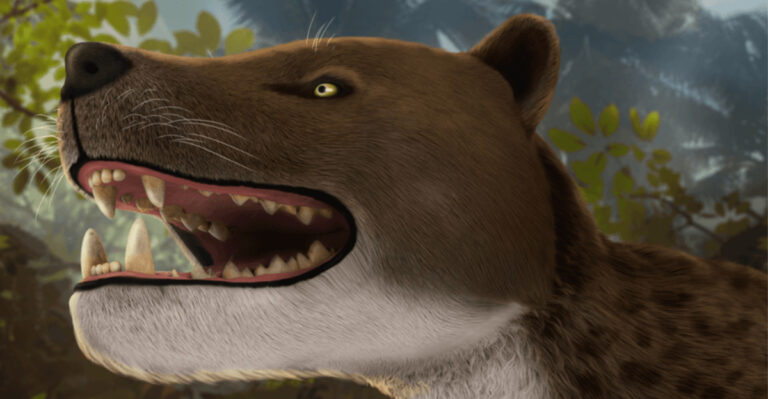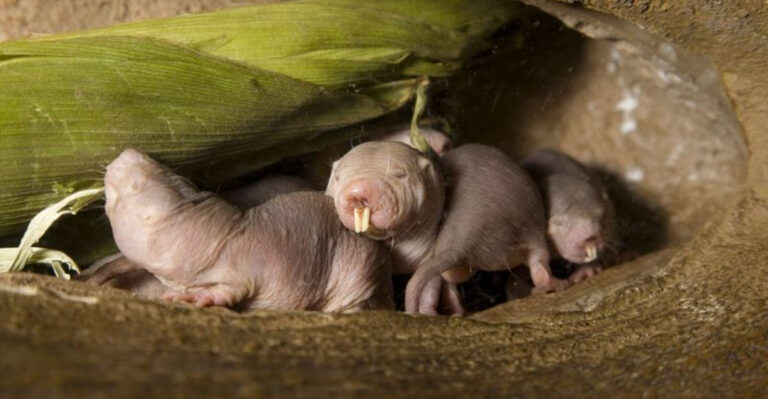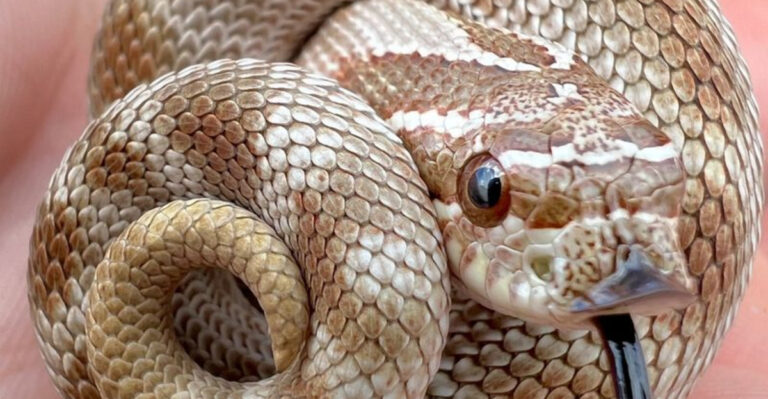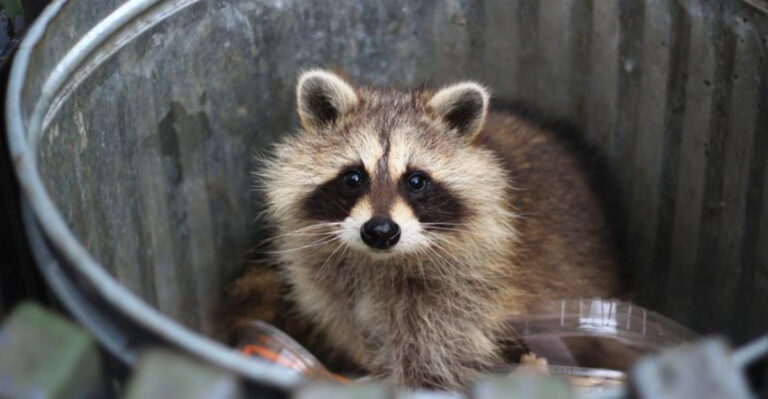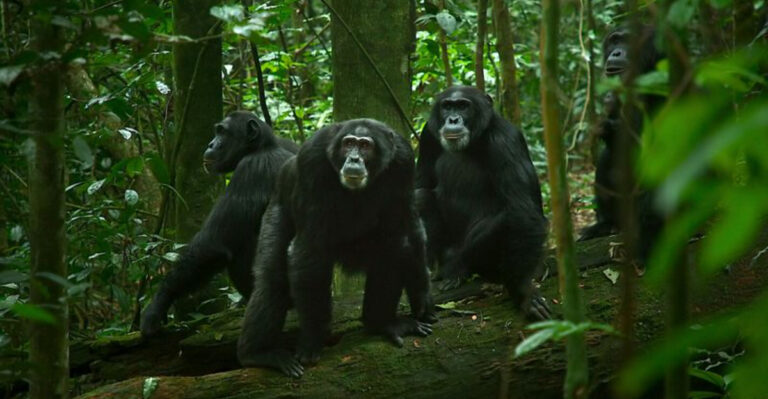These Are The Most Beautiful Animals Ever Spotted In Every State
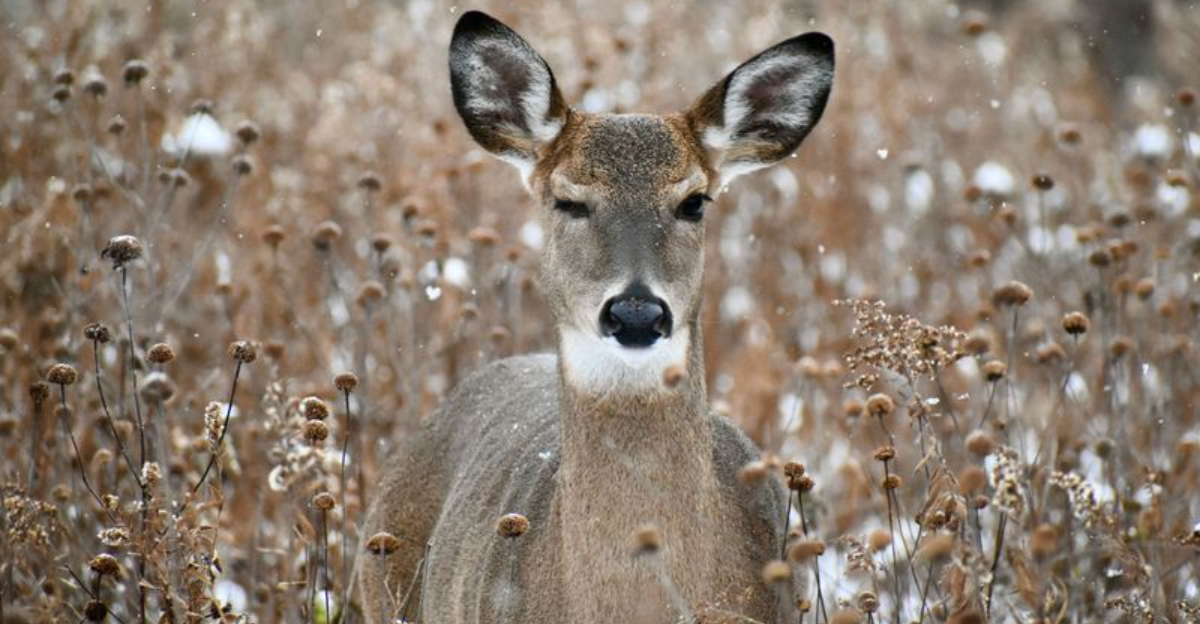
The United States is a vast country teeming with diverse wildlife. From the majestic mountains to the expansive plains, each state boasts its own unique ecological treasures.
In this detailed exploration, we journey across the nation to appreciate the most beautiful animals that have been spotted in every state. Prepare yourself for a captivating encounter with nature’s finest creations, beautifully adapted to their specific environments.
1. Alabama: Red Hills Salamander
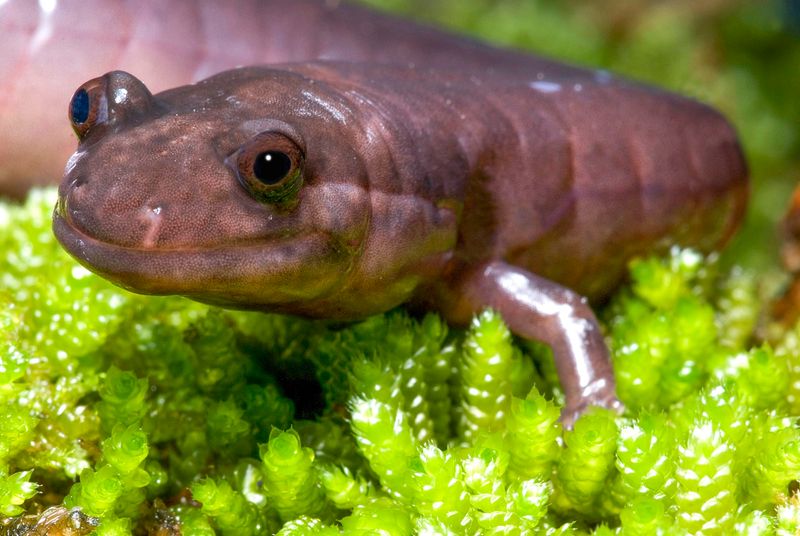
Alabama proudly hosts the elusive Red Hills Salamander, a creature of unique charm. Nestled exclusively in the Red Hills region, this amphibian’s slender form and subtle coloration allow it to blend seamlessly with its forest habitat.
The Red Hills Salamander thrives in the moist, shaded slopes of its home, where it spends most of its life burrowed underground. Its notable elongated body and smooth skin are perfectly adapted to this subterranean lifestyle.
Conservation efforts are underway to protect this rare species, as its limited range makes it vulnerable to habitat disturbance. The salamander serves as a reminder of Alabama’s rich biodiversity and the importance of preserving natural habitats.
2. Alaska: Bald Eagle
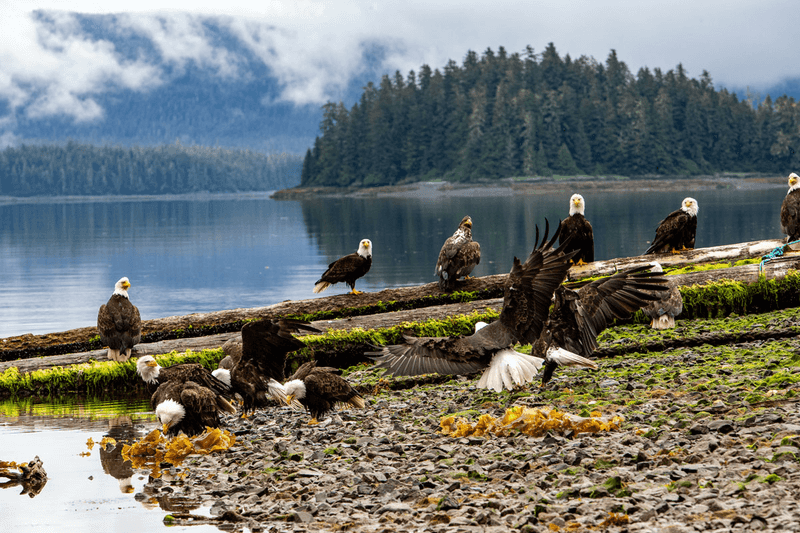
Alaska’s skies are graced by the presence of the iconic Bald Eagle, a symbol of strength and freedom. This magnificent bird is renowned for its impressive wingspan and keen vision.
With a territory that spans across the vast Alaskan wilderness, the Bald Eagle thrives in proximity to water bodies, where it hunts for fish. Its powerful talons and beak make it a formidable predator.
In Alaska, conservation measures ensure the Bald Eagle’s continued presence, allowing this majestic creature to soar freely above the state’s stunning landscapes. The Bald Eagle represents not just natural beauty but also the resilience of wildlife in harsh climates.
3. Arizona: Cactus Wren
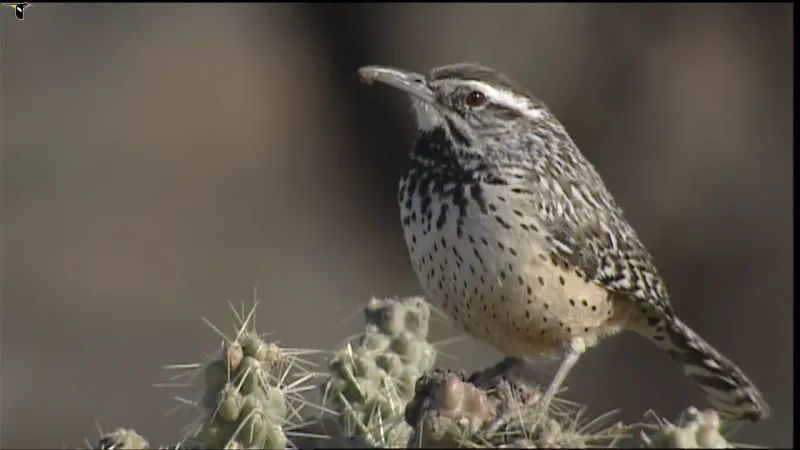
The Cactus Wren, Arizona’s state bird, is an emblem of resilience and adaptation. Found amidst the prickly cacti of the Sonoran Desert, this bird’s lively presence adds vibrancy to the arid landscape. Characterized by its bold markings and energetic behavior, the Cactus Wren is perfectly adapted to desert life.
Its nests, ingeniously built within the protective spines of cacti, offer safety from predators. Observing the Cactus Wren offers insight into Arizona’s unique desert ecosystem, where life thrives against the odds. This bird’s song echoes the spirit of survival and showcases the beauty of adaptation.
4. Arkansas: Northern Mockingbird
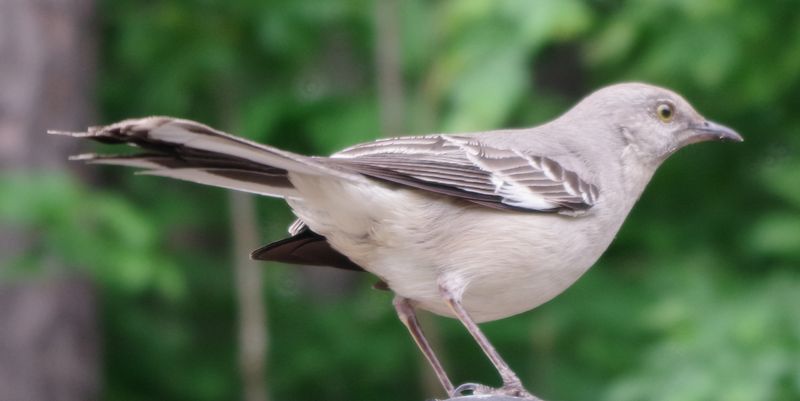
In Arkansas, the Northern Mockingbird enchants observers with its melodious repertoire. Known for mimicking the calls of other birds, this songbird brings a symphony to the natural world. Sporting elegant gray and white plumage, the Northern Mockingbird is both visually striking and audibly impressive.
Its adaptability to various habitats, from forests to urban areas, underscores its resilience. The presence of this bird in Arkansas gardens and parks offers a daily reminder of nature’s harmonious beauty. Its songs, varied and complex, add a delightful soundtrack to daily life.
5. California: Monarch Butterfly
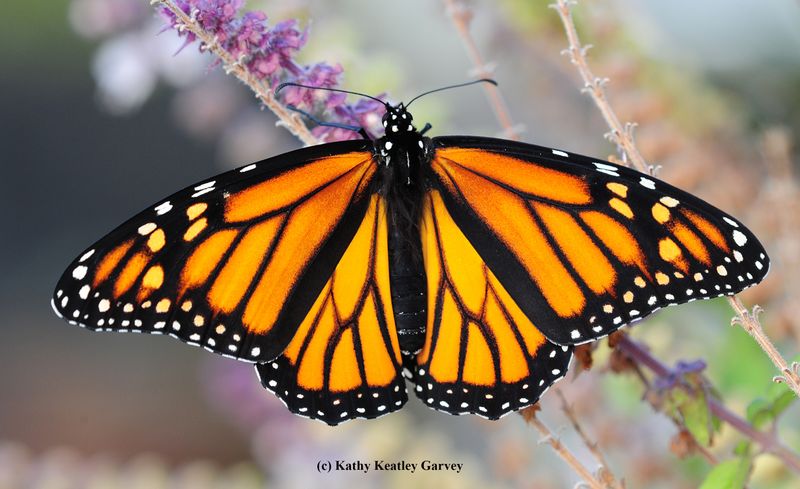
California is a vital waypoint for the Monarch Butterfly, a species known for its miraculous migration. This butterfly’s vivid orange and black wings create a spectacular sight as they flutter among the wildflowers. The Monarch’s journey, spanning thousands of miles, is a marvel of nature.
California’s coastal areas provide essential habitat during its migration, offering both rest and nourishment. Efforts to plant milkweed and protect natural spaces are crucial in supporting the Monarch population. This butterfly symbolizes transformation and the interconnectedness of ecosystems.
6. Colorado: Rocky Mountain Elk
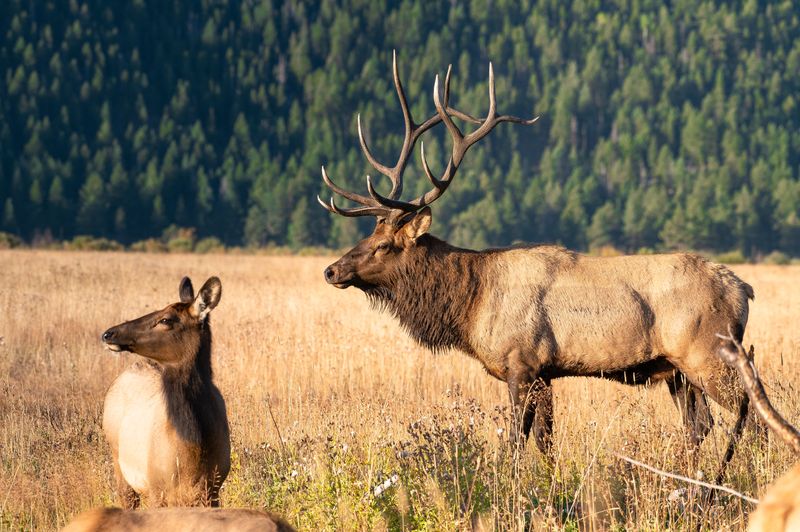
The Rocky Mountain Elk epitomizes the grandeur of Colorado’s wildlife. With its massive antlers and robust physique, this animal is a striking representative of the state’s mountainous regions. Inhabiting the alpine meadows and forests, the elk’s presence is both majestic and vital to the ecosystem.
Its diet of grasses and plants aids in maintaining the balance of vegetation. During the fall, the elk’s haunting bugle call echoes through the mountains, adding an element of mystery to Colorado’s natural beauty. This creature’s resilience and adaptability make it a treasured icon of the state.
7. Connecticut: Eastern Box Turtle
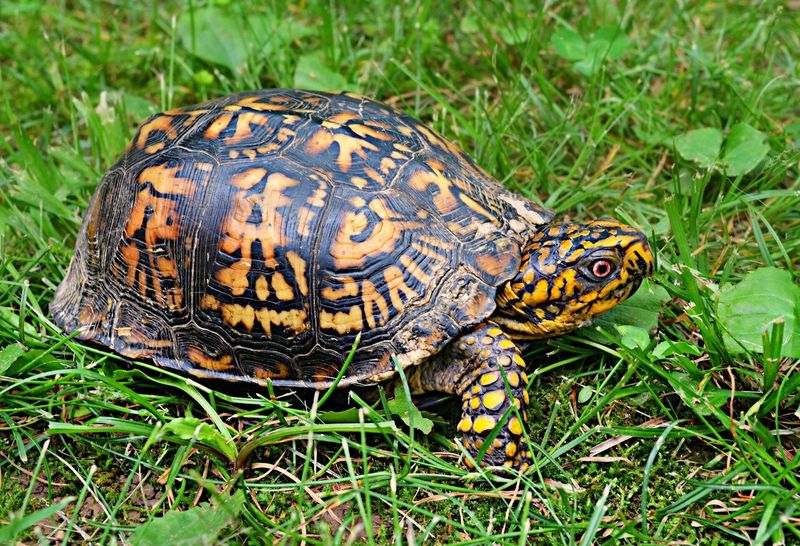
In Connecticut, the Eastern Box Turtle captivates with its vibrant shell and gentle disposition. This terrestrial turtle is a master of camouflage, blending with the forest floor. Its colorful shell, adorned with intricate patterns, serves as both protection and a work of art.
Preferring moist woodlands and meadows, the turtle leads a reclusive life. Conservation efforts focus on preserving its habitat, as roadways and development pose ongoing threats. The Eastern Box Turtle symbolizes patience and the delicate balance of nature.
8. Delaware: Eastern Bluebird
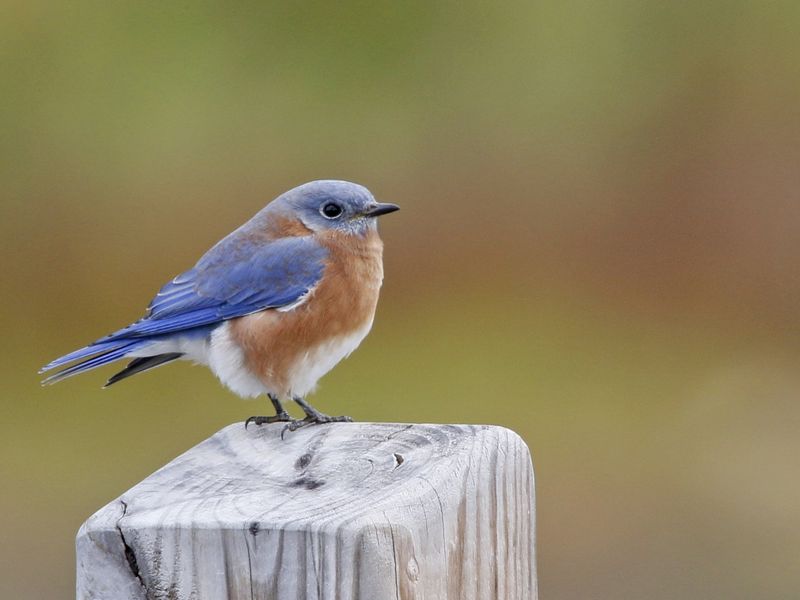
The Eastern Bluebird, with its radiant blue and red plumage, is a delightful sight in Delaware. This small bird adds a splash of color to open fields and orchards. Known for its gentle demeanor, the Eastern Bluebird thrives in areas with abundant natural cavities for nesting.
Its diet consists mainly of insects and berries, playing a crucial role in pest control. Initiatives to install nesting boxes have contributed to the bluebird’s resurgence, allowing this charming species to flourish. Its presence is a testament to successful conservation efforts.
9. Florida: Florida Panther
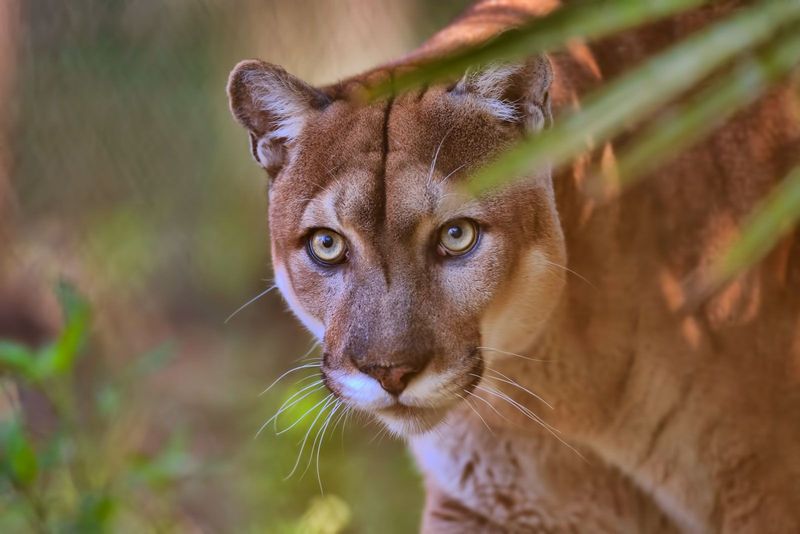
Florida’s wild landscapes are home to the elusive Florida Panther, a symbol of the state’s rich biodiversity. This large, solitary cat is a master of stealth, moving gracefully through the swamps. With a sleek, muscular body, the Florida Panther is an apex predator, essential for controlling prey populations.
It is a creature of mystery, rarely seen and highly revered. Conservation efforts aim to protect its dwindling habitat from urban encroachment, ensuring its survival. The Florida Panther embodies the wild spirit of the Sunshine State.
10. Georgia: Loggerhead Sea Turtle

Georgia’s coastal waters are graced by the presence of the Loggerhead Sea Turtle. This magnificent marine creature is renowned for its large size and powerful flippers. Spending much of its life in the ocean, the Loggerhead returns to sandy beaches to nest, a journey marked by instinct and endurance.
Its distinctive shell provides both protection and buoyancy. Conservation programs are critical to safeguarding nesting sites and reducing threats from fishing gear. The Loggerhead Sea Turtle is a symbol of the ocean’s enduring mysteries and the cycle of life.
11. Hawaii: Hawaiian Monk Seal
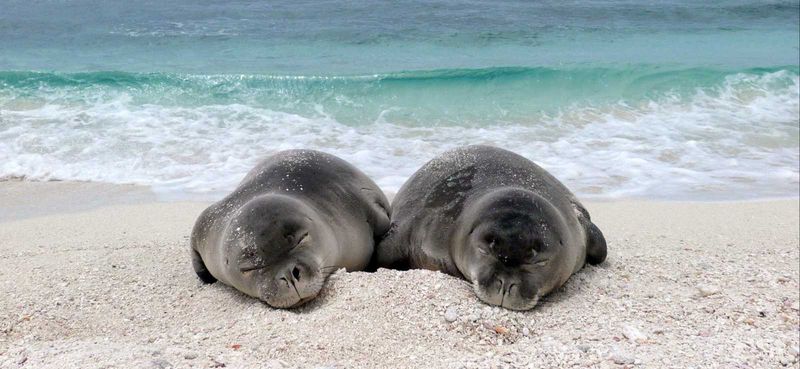
Hawaii’s beaches offer sanctuary to the Hawaiian Monk Seal, an endemic species of the islands. This seal’s sleek, gray body is a familiar sight along the sandy shores. As a marine mammal, the Monk Seal is adapted to both land and sea, often seen basking under the sun or diving for prey.
Its presence is vital to Hawaii’s marine ecosystems. Conservation efforts focus on protecting this critically endangered species from human interference and habitat loss. The Hawaiian Monk Seal is a living connection to the islands’ natural heritage.
12. Idaho: Peregrine Falcon
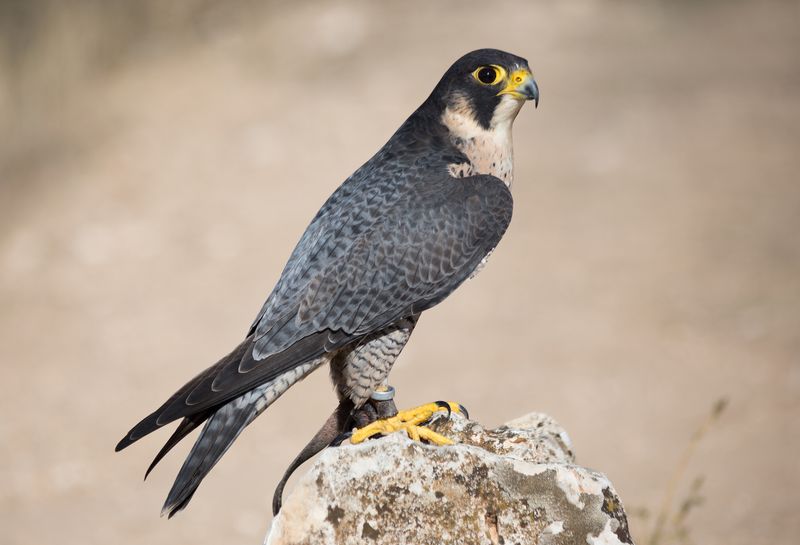
Idaho’s vast skies are home to the swift Peregrine Falcon, a master of aerial hunting. Known for its incredible speed, this bird is a symbol of grace and power. The Peregrine Falcon’s streamlined body and sharp talons make it a formidable predator, capable of striking prey mid-air.
Its presence is often noted near rocky cliffs and open landscapes. Efforts to protect nesting sites have aided in the falcon’s recovery from past declines. This bird’s flight embodies the spirit of freedom and the wild beauty of Idaho.
13. Illinois: White-tailed Deer
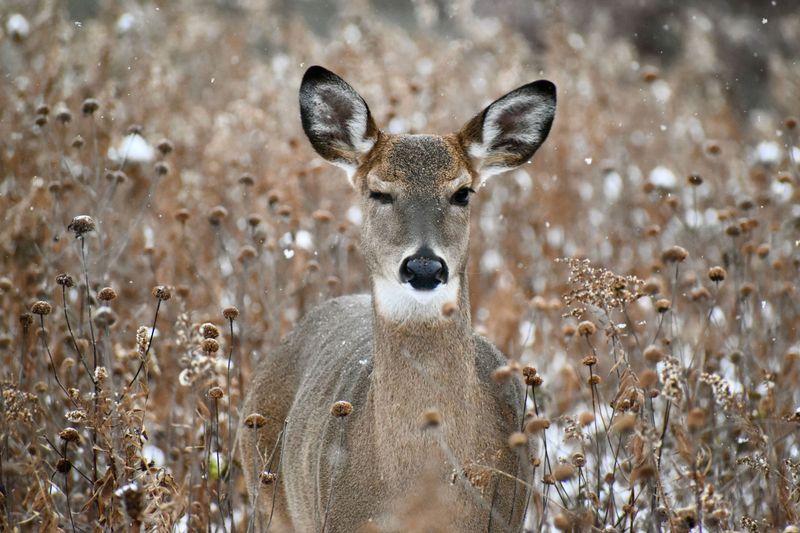
The White-tailed Deer is a familiar sight in Illinois, gracing forests and grasslands with its gentle presence. Its slender frame and graceful movements captivate onlookers. Characterized by its distinctive tail, which it raises as a signal of alert, this deer is a master of adaptation.
It thrives in diverse environments, from woodlands to suburban areas. Efforts to manage populations and protect habitats ensure the White-tailed Deer’s continued role in Illinois’ ecosystems. This animal represents the harmonious balance of nature and the tranquility of the state’s landscapes.
14. Indiana: Sandhill Crane
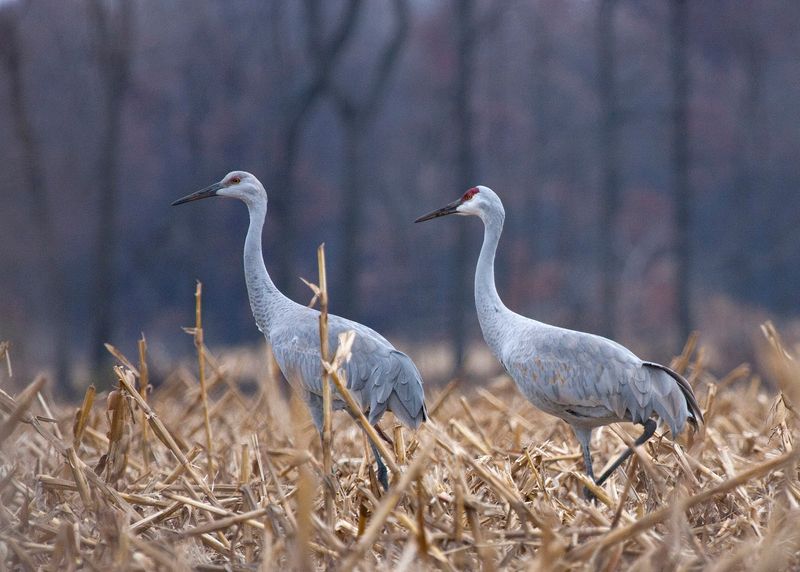
In Indiana’s wetlands, the Sandhill Crane stands as a beacon of beauty and grace. These tall, elegant birds are known for their distinctive red crowns and haunting calls. Sandhill Cranes frequent marshes and prairies, where they forage for seeds and small animals.
Their synchronized dances during courtship add a touch of spectacle to the natural world. Conservation efforts have helped stabilize populations, allowing these magnificent birds to continue their ancient migratory patterns. The Sandhill Crane’s presence in Indiana is a reminder of the interconnectedness of ecosystems and the marvel of avian life.
15. Iowa: American Goldfinch
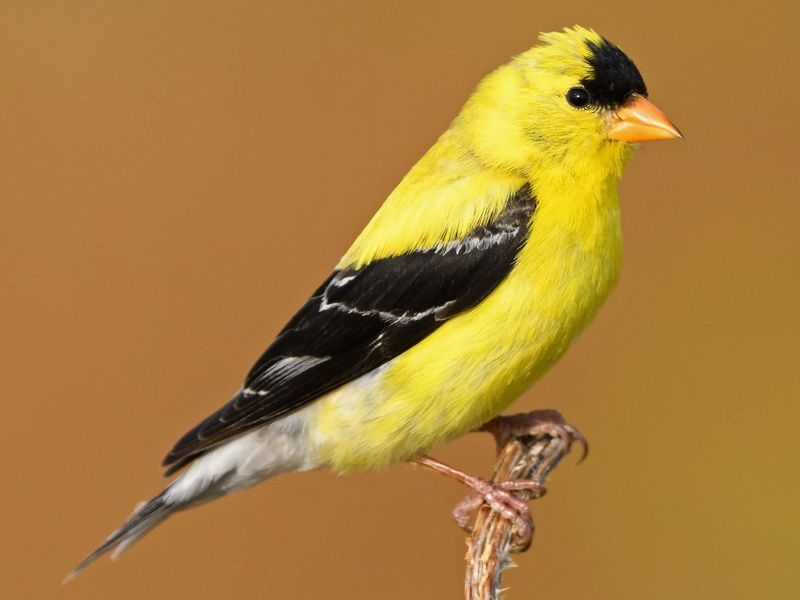
Iowa’s landscapes are brightened by the cheerful presence of the American Goldfinch. This small bird is easily recognizable by its vibrant yellow plumage and melodious song. Often seen flitting among sunflowers and meadows, the goldfinch’s diet consists largely of seeds.
Its acrobatic flight patterns add a lively touch to the open fields. Conservation practices, including the planting of native flowers, support the goldfinch population. This bird’s vibrant colors and joyful presence enhance the natural beauty of Iowa.
16. Kansas: Western Meadowlark
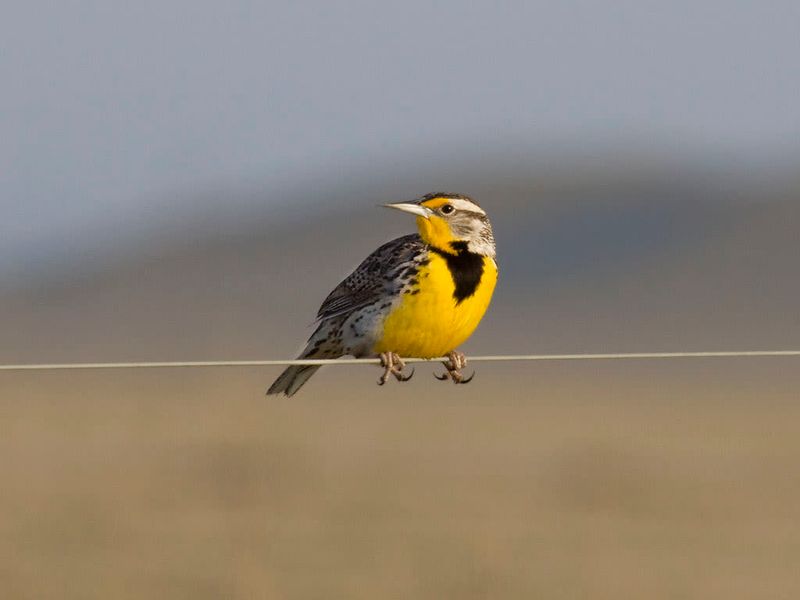
The Western Meadowlark, with its bright yellow chest and cheerful song, is a cherished sight on Kansas prairies. This bird’s intricate patterns and melodious calls are a delight to the senses. Often seen perched on fence posts, the meadowlark thrives in open grasslands, where it forages for insects and seeds.
Its presence is a hallmark of the prairie ecosystem. Efforts to preserve grassland habitats are essential for the meadowlark’s survival. This bird’s song echoes the spirit of the plains and the beauty of Kansas’ natural landscapes.
17. Kentucky: Kentucky Warbler
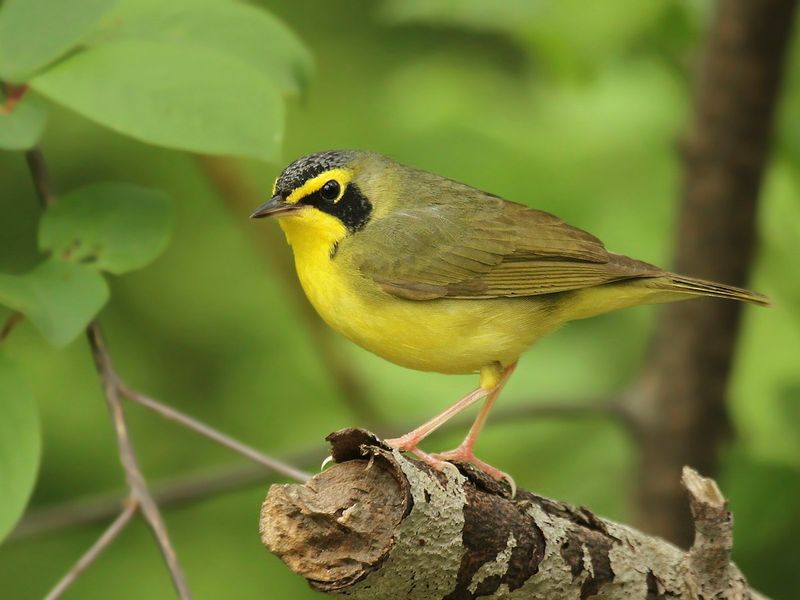
The Kentucky Warbler is a vibrant gem in the forests of Kentucky, known for its striking yellow and olive plumage. This secretive bird is often heard before it is seen, hidden among dense foliage. Preferring moist, deciduous forests, the warbler’s presence is an indicator of healthy woodland ecosystems.
Its diet of insects and spiders supports forest health. Conservation efforts focus on preserving forest habitats to ensure the warbler’s continued presence. This bird’s song adds a harmonious note to Kentucky’s natural symphony.
18. Louisiana: Roseate Spoonbill
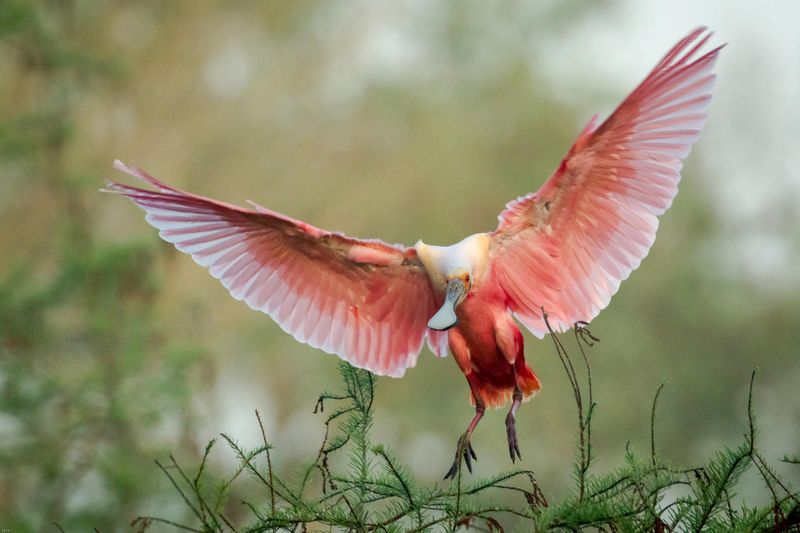
Louisiana’s swamps are brought to life by the striking Roseate Spoonbill. With its vivid pink plumage and distinctive spoon-shaped bill, this bird is a spectacle among the wetlands. The Roseate Spoonbill wades gracefully through the water, using its bill to sift for small fish and invertebrates.
Its presence adds an exotic flair to the swampy landscapes. Conservation measures aim to protect wetland habitats, ensuring the spoonbill’s survival. This bird’s beauty and unique adaptations highlight the richness of Louisiana’s ecosystems.
19. Maine: Atlantic Puffin
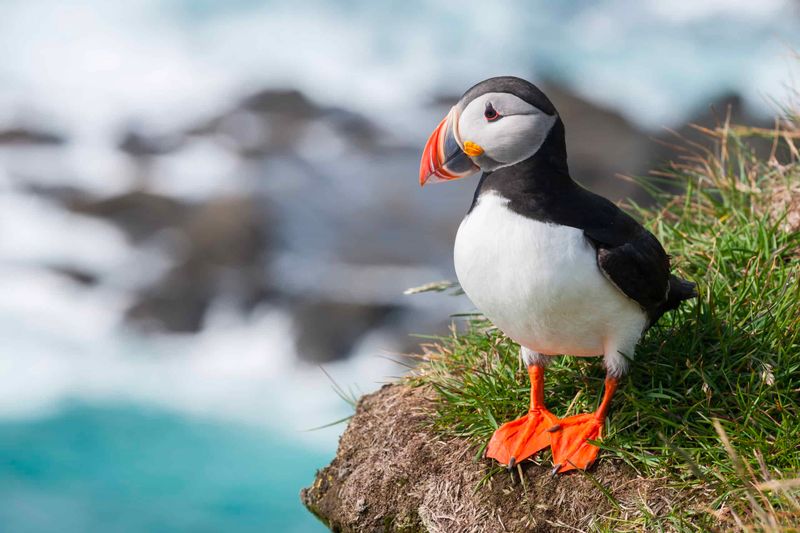
Maine’s rocky shores are graced by the charming Atlantic Puffin. This seabird, with its colorful beak and striking black and white plumage, is a favorite among birdwatchers.
The Puffin nests on coastal cliffs, where it raises its young in burrows. Its ability to dive and catch fish with its beak is a testament to its hunting prowess. Conservation efforts have been instrumental in protecting nesting sites, allowing the Puffin population to thrive. This bird embodies the rugged beauty of Maine’s coastline.
20. Maryland: Blue Crab
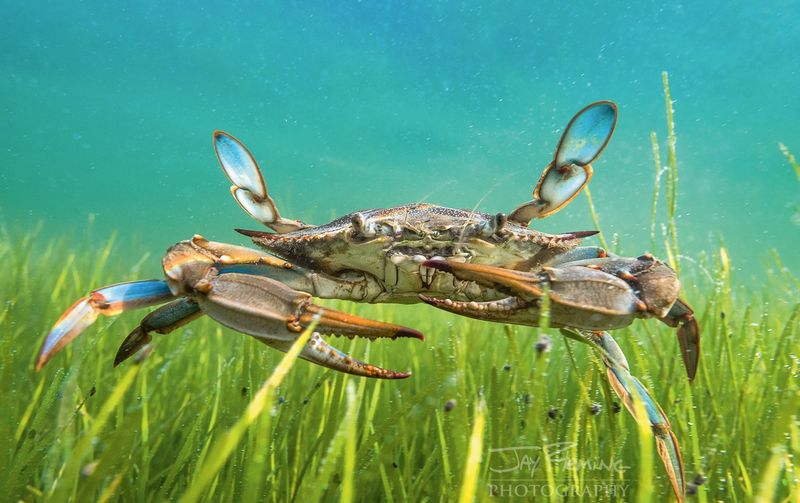
Maryland’s Chesapeake Bay is renowned for its Blue Crab, a symbol of the state’s culinary and ecological heritage. This crustacean, with its vibrant blue claws, is a vital part of the bay’s ecosystem. The Blue Crab’s agile movement and adaptability make it a successful inhabitant of the bay’s waters.
It plays a crucial role in maintaining the health of seagrass beds and marshes. Conservation efforts focus on sustainable harvesting practices to ensure the crab’s continued abundance. The Blue Crab is both a culinary delight and a guardian of Maryland’s aquatic ecosystems.
21. Massachusetts: Humpback Whale
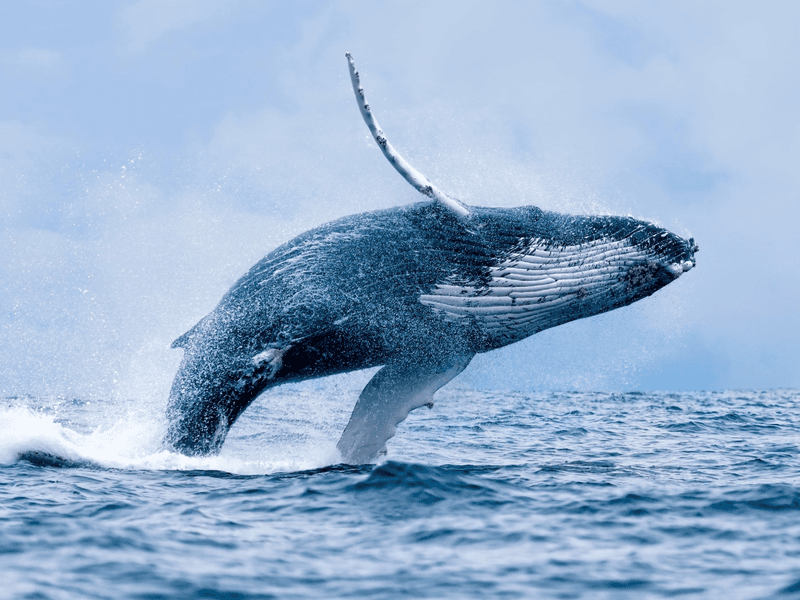
Massachusetts’ coastal waters are visited by the magnificent Humpback Whale. Known for its acrobatics, this whale captivates with its massive size and distinctive flippers. The Humpback’s migrations bring it to these waters, where it feasts on small fish and krill. Its breaching displays are a sight to behold, drawing awe from spectators.
Conservation efforts aim to protect the whales from threats such as ship collisions and entanglements. The Humpback Whale is a symbol of marine majesty and the wonders of the ocean.
22. Michigan: Common Loon
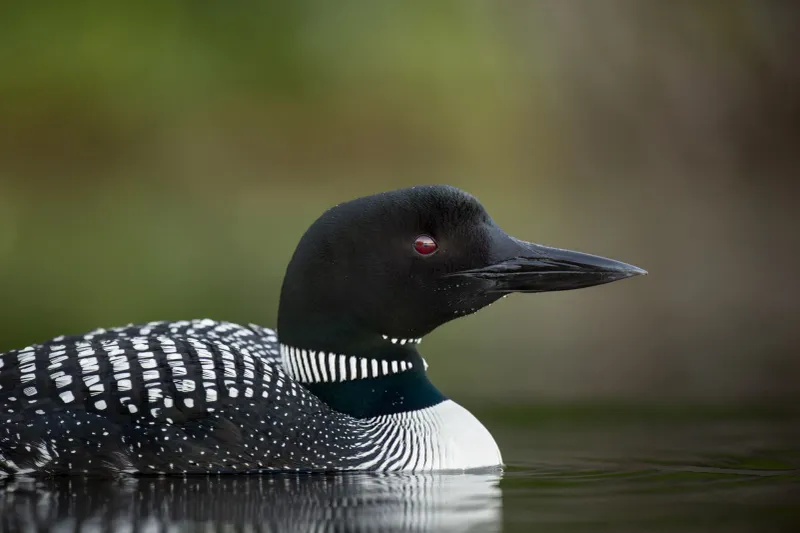
Michigan’s lakes echo with the haunting calls of the Common Loon. This bird, with its striking black and white plumage, is a beloved symbol of the state’s wilderness.
The Loon’s red eyes and ability to dive deep for fish make it a remarkable hunter. Its presence on clear, northern lakes is a marker of pristine aquatic environments. Efforts to preserve water quality and habitats are crucial for the loon’s survival. This bird’s song and beauty enrich Michigan’s natural landscapes.
23. Minnesota: Gray Wolf
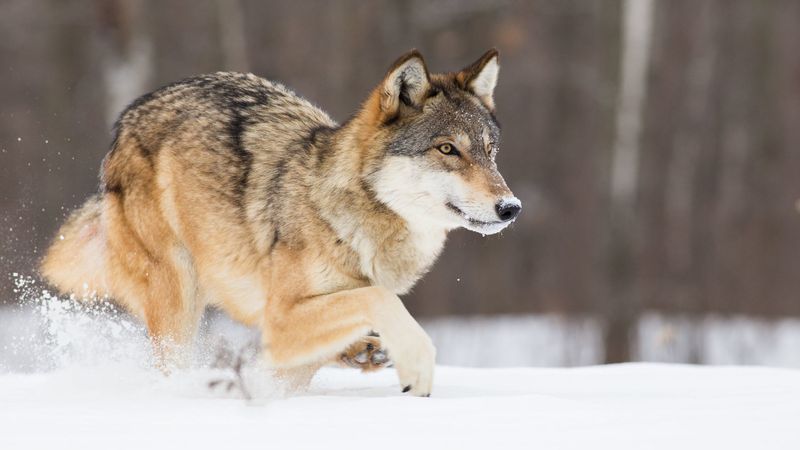
Minnesota’s wild forests are home to the majestic Gray Wolf. Known for its thick fur and piercing gaze, this predator is a vital part of the state’s ecosystems. The Gray Wolf’s social structure and hunting skills are keys to its success in harsh environments.
It preys on deer and other large animals, maintaining the balance of populations. Conservation efforts focus on protecting the wolf’s habitat and ensuring healthy populations. The Gray Wolf symbolizes the wild spirit and biodiversity of Minnesota.
24. Mississippi: Wood Duck
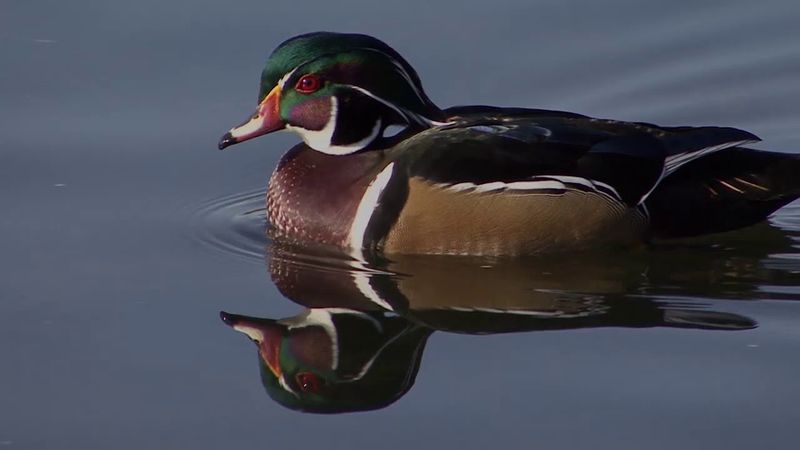
Mississippi’s wetlands are enlivened by the presence of the Wood Duck. Known for its strikingly colorful plumage, this bird adds vibrancy to the serene waters. The Wood Duck’s unique nesting habits, utilizing tree cavities, make it a fascinating subject for observation.
Its diet primarily consists of aquatic plants and insects. Efforts to preserve wetland habitats are vital for supporting Wood Duck populations. This bird’s beauty and adaptability highlight the richness of Mississippi’s ecosystems.
25. Missouri: Eastern Bluebird
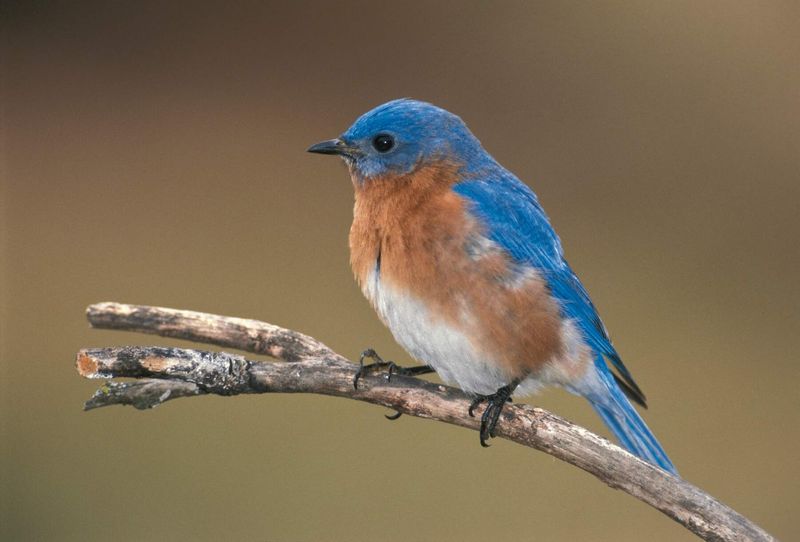
The Eastern Bluebird graces Missouri’s meadows with its vibrant blue plumage and sweet song. This bird is a joy to behold, adding a splash of color to the landscape. Often seen perched on fence posts, the bluebird thrives in open areas with available nesting cavities.
Its diet of insects aids in natural pest control. Conservation efforts, including the installation of nesting boxes, support the bluebird’s populations. This bird is a cherished symbol of the beauty and vitality of Missouri’s natural world.
26. Montana: Grizzly Bear
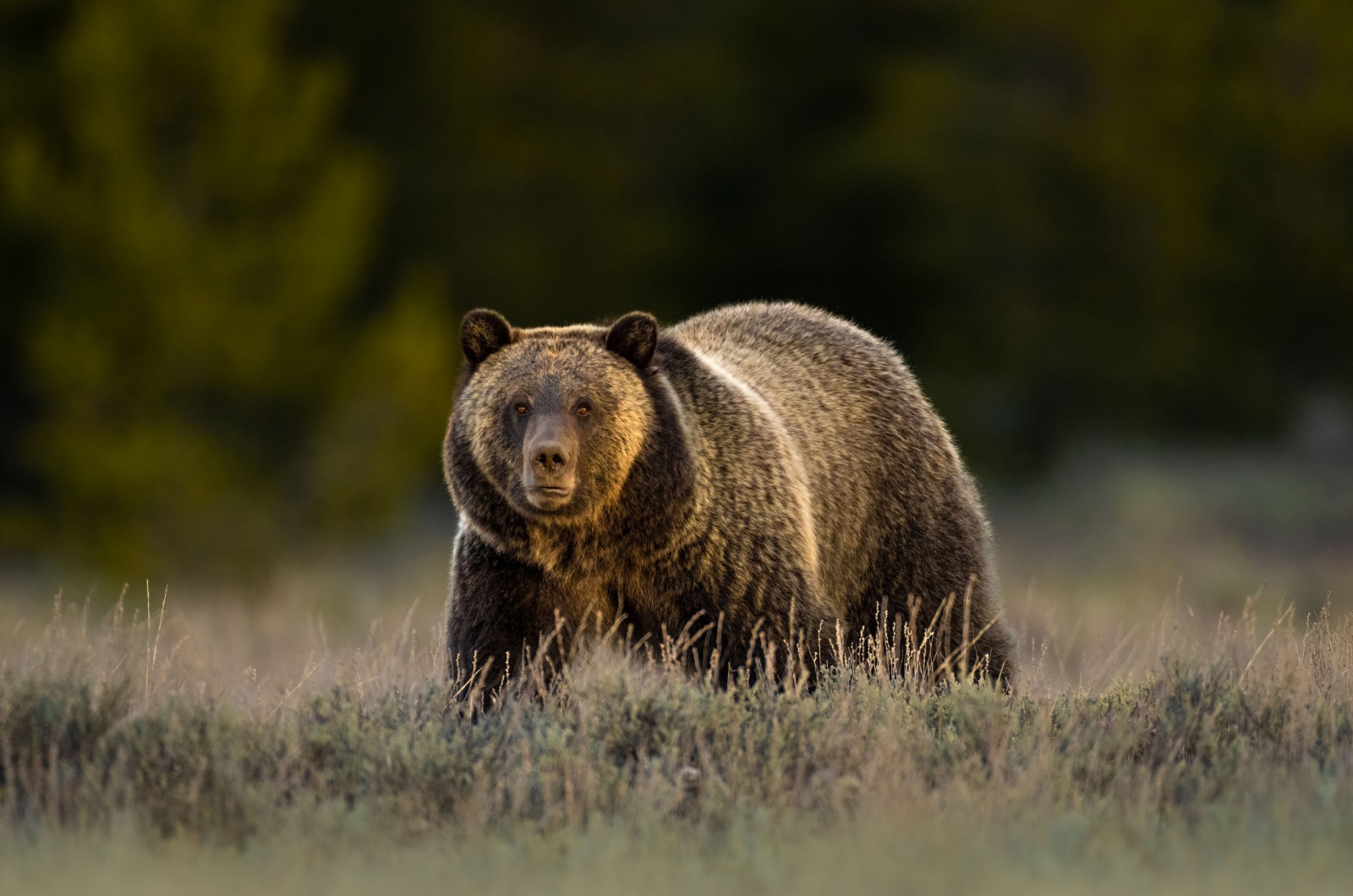
Shutterstock
Montana’s wild expanses are the domain of the formidable Grizzly Bear. Known for its immense power and intelligence, this bear is an apex predator and a symbol of the wild. The Grizzly’s diverse diet and adaptability allow it to thrive in various environments, from dense forests to open meadows.
Its presence is a key component of the ecosystem. Conservation efforts focus on protecting habitats and reducing human-bear conflicts. The Grizzly Bear embodies the untamed beauty and resilience of Montana’s wilderness.
27. Nebraska: American Bison
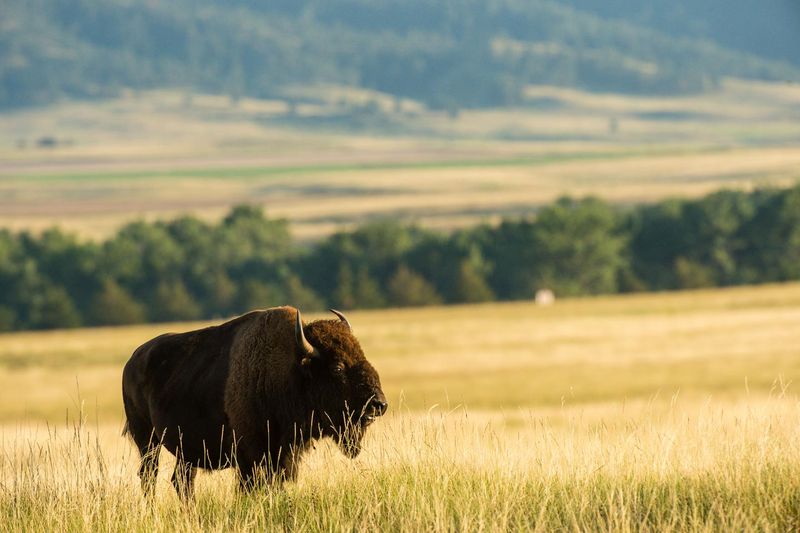
Nebraska’s plains are home to the majestic American Bison. These massive creatures, with their distinctive humps and thick coats, are icons of the American West. The Bison’s grazing habits play a crucial role in maintaining grassland ecosystems, promoting biodiversity and soil health.
Their presence is a reminder of the prairie’s history. Conservation efforts have led to the recovery of Bison populations, allowing them to roam freely once more. These animals symbolize strength, resilience, and the enduring spirit of the plains.
28. Nevada: Desert Bighorn Sheep
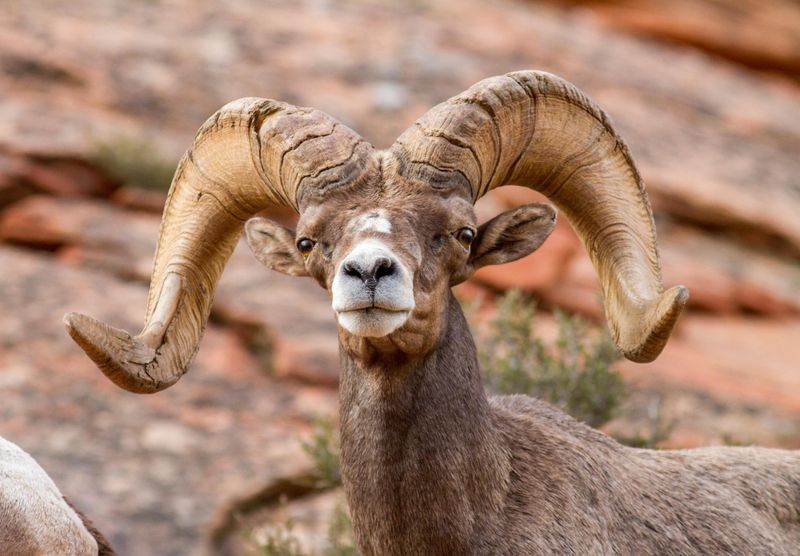
Nevada’s rugged landscapes are home to the Desert Bighorn Sheep. Known for their impressive curved horns and agility, these animals are perfectly adapted to desert life. The Bighorn Sheep navigates steep, rocky terrain with ease, finding sustenance in sparse vegetation.
Its presence is a testament to adaptation and survival in harsh environments. Conservation efforts focus on ensuring water availability and habitat connectivity. The Desert Bighorn Sheep embodies the rugged beauty and resilience of Nevada’s wilderness.
29. New Hampshire: Moose
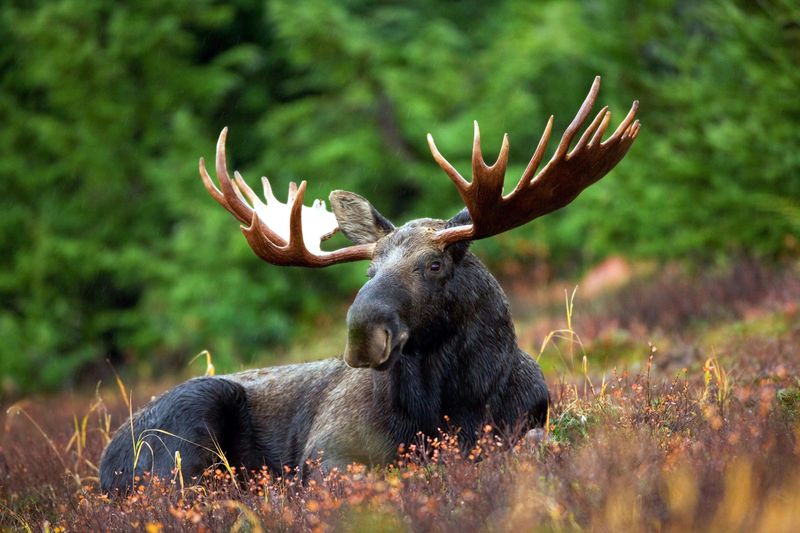
New Hampshire’s forested landscapes are graced by the presence of the Moose. Known for its massive antlers and robust physique, this animal is a symbol of the state’s wild beauty. The Moose thrives in woodland areas, often seen near lakes and rivers where it feeds on aquatic plants.
Its solitary nature adds an air of mystery to its presence. Conservation efforts ensure healthy populations and habitats, allowing the Moose to roam freely. This majestic creature is a testament to New Hampshire’s natural heritage and ecological richness.
30. New Jersey: Eastern Goldfinch
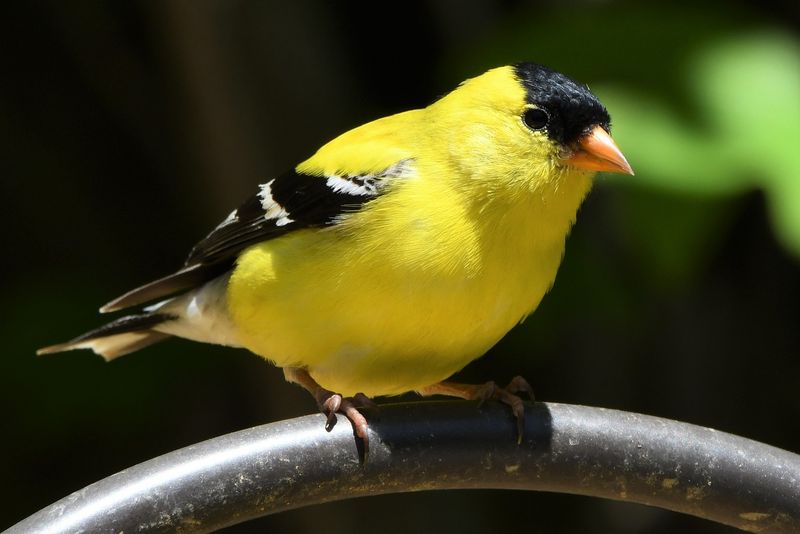
In New Jersey, the Eastern Goldfinch adds a splash of color to gardens and meadows. This small bird, with its vibrant yellow and black plumage, is a delight to observe. Often seen flitting among flowers and feeders, the goldfinch’s diet consists mainly of seeds.
Its cheerful song and agile flight patterns enhance the charm of the natural world. Conservation efforts to plant native flora support the goldfinch’s populations. This bird’s presence is a testament to the beauty and vibrancy of New Jersey’s landscapes.
31. New Mexico: Roadrunner
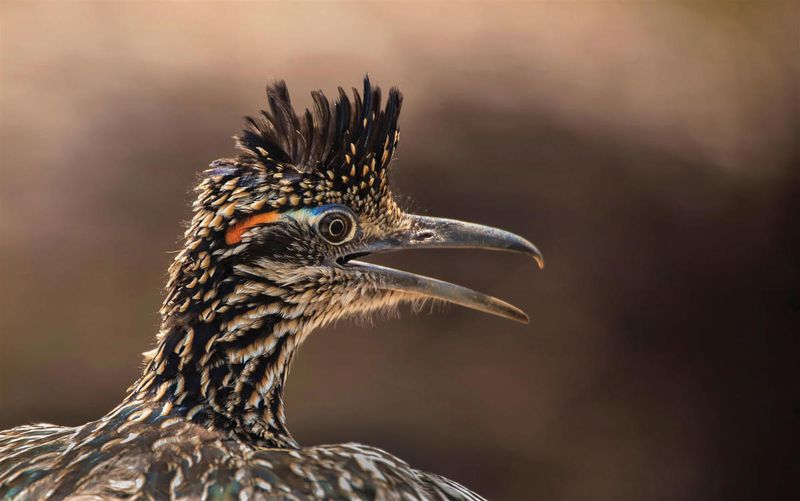
The Roadrunner, famed for its speed and agility, is a charismatic resident of New Mexico’s deserts. With long legs and a distinctive crest, this bird embodies the spirit of the arid landscape. Known for its ability to sprint across the desert floor, the Roadrunner preys on insects and small animals. Its unique adaptations make it a symbol of survival and resourcefulness.
Conservation efforts aim to preserve the delicate desert ecosystems that support the Roadrunner. This bird’s presence is a reminder of the intricate balance of life in the desert.
32. New York: Osprey
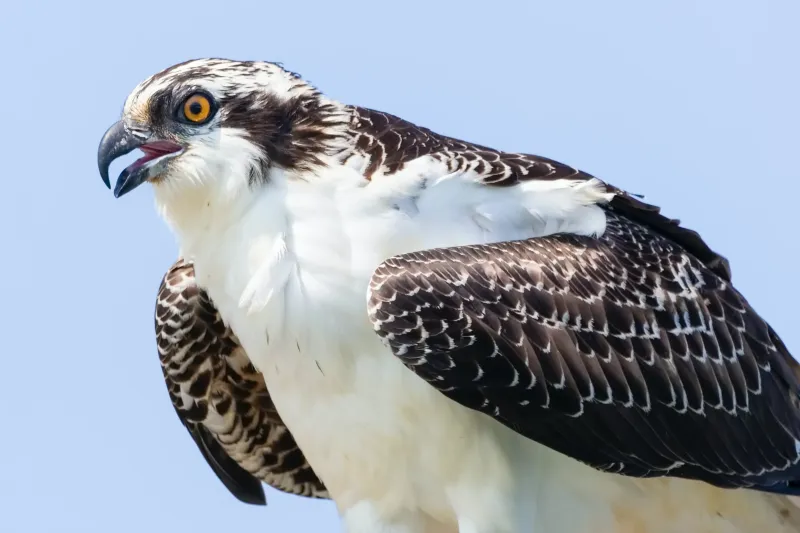
New York’s waterways are the hunting grounds for the impressive Osprey. Known for its striking hunting skills, this bird is a master of the skies.
With powerful wings and keen eyesight, the Osprey dives from great heights to catch fish, showcasing its incredible precision. Its nests, often built near water, are a common sight. Conservation efforts have successfully increased Osprey populations, ensuring their continued presence.
This bird’s grace and power highlight the beauty of New York’s natural environments.
33. North Carolina: Carolina Wren
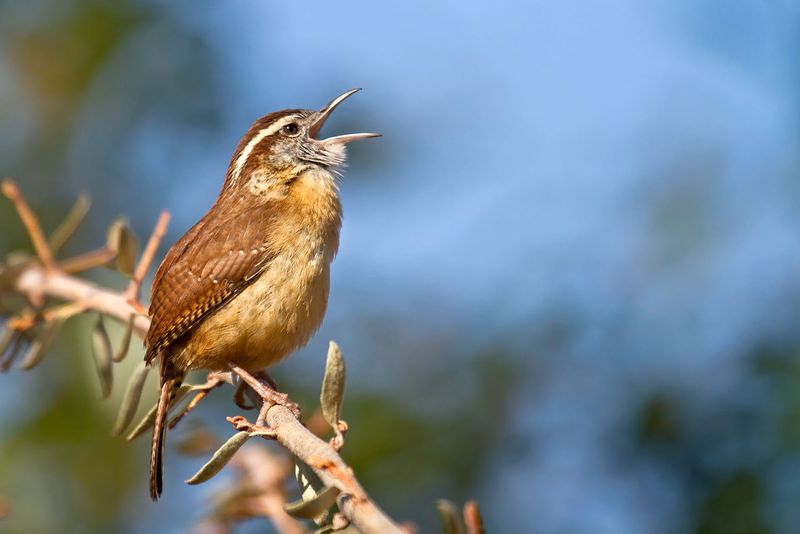
North Carolina’s forests are alive with the sound of the Carolina Wren. This small bird, with its warm brown plumage, is known for its energetic songs and curious nature.
Often seen flitting through underbrush, the Carolina Wren builds its nests in a variety of locations, displaying remarkable adaptability. Its diet includes insects and spiders, contributing to forest health. Conservation efforts to preserve forest habitats support the wren’s populations. This bird’s presence is a joyful reminder of the richness of North Carolina’s ecosystems.
34. North Dakota: Sharp-tailed Grouse
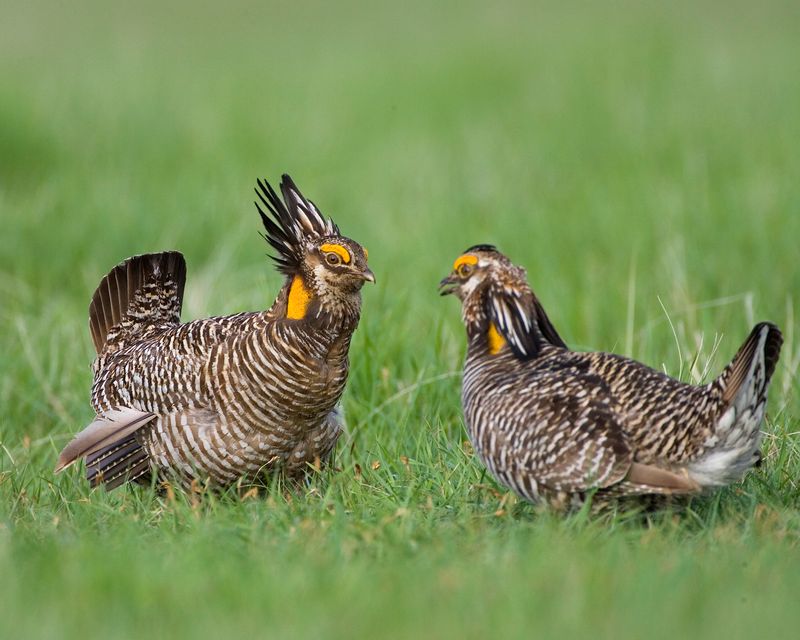
North Dakota’s grasslands resonate with the calls of the Sharp-tailed Grouse. Known for its intricate feather patterns and lively displays, this bird is a spectacle to witness. During mating season, the grouse’s dances and vocalizations attract attention, showcasing the beauty of prairie life.
Its diet consists of seeds and insects, supporting grassland health. Conservation efforts focus on preserving open habitats necessary for the grouse’s survival. This bird’s presence is a testament to the dynamic nature of North Dakota’s landscapes.
35. Ohio: Cardinal
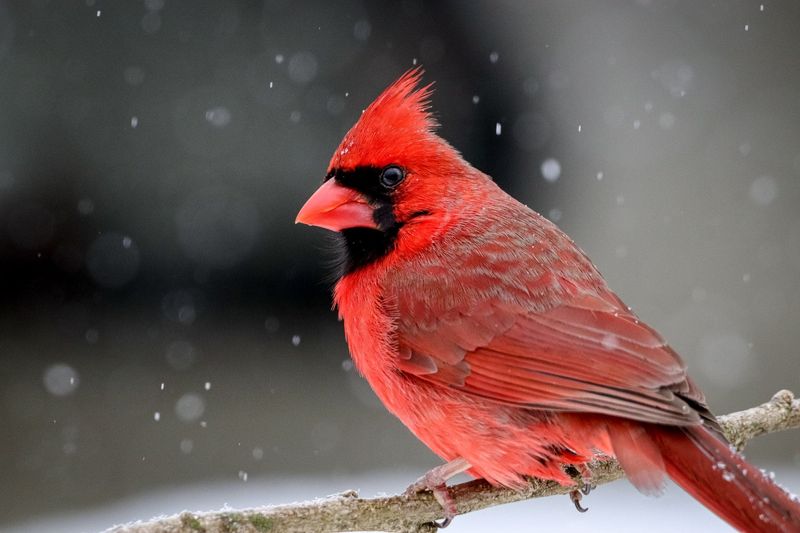
Ohio’s winters are brightened by the presence of the Cardinal. Known for its vibrant red feathers, this bird is a striking symbol of warmth and vitality in the cold season. The Cardinal’s song adds a melodic touch to the winter air, creating a soundscape of beauty and life.
Its adaptability to various habitats makes it a frequent visitor to gardens and woodlands. Efforts to provide food and shelter support the Cardinal’s populations. This bird’s brilliance and song enhance the charm of Ohio’s natural environments.
36. Oklahoma: Scissor-tailed Flycatcher
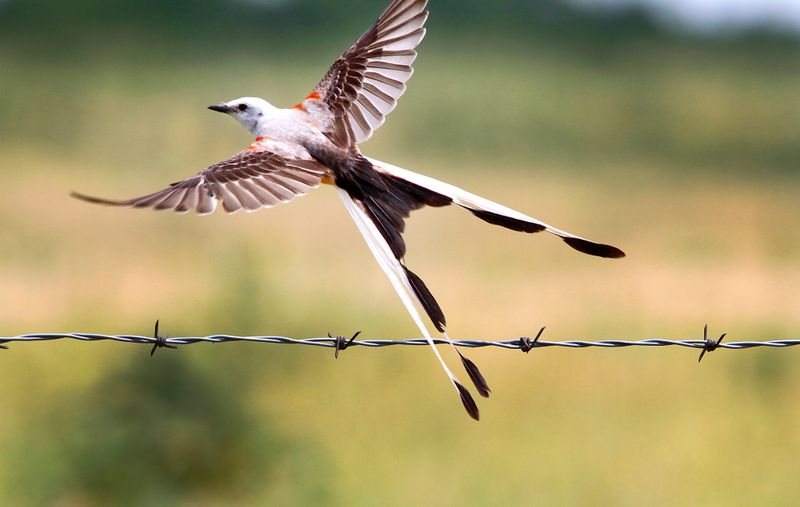
Oklahoma’s open fields are graced by the striking Scissor-tailed Flycatcher. With its long tail feathers and graceful flight, this bird is a marvel of the skies. Known for its aerial acrobatics, the flycatcher captures insects mid-flight, showcasing its agility and precision.
Its presence is a hallmark of the prairie ecosystem. Conservation measures ensure suitable habitats for nesting and feeding, supporting the flycatcher’s populations. This bird’s elegance and skill highlight the beauty of Oklahoma’s landscapes.
37. Oregon: Great Horned Owl
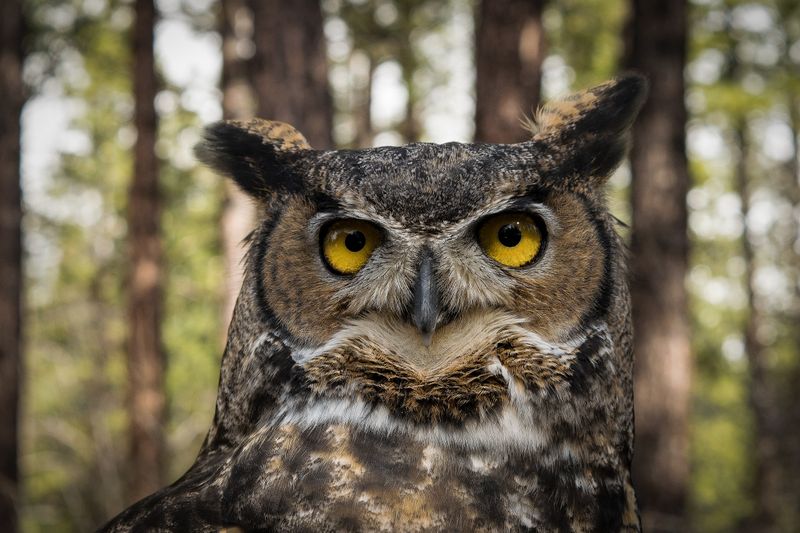
Oregon’s forests are home to the enigmatic Great Horned Owl. Known for its piercing yellow eyes and tufted ears, this owl is a master of nocturnal hunting. The Great Horned Owl’s adaptable nature allows it to thrive in diverse habitats, from forests to urban areas.
Its silent flight and powerful talons make it a formidable predator. Conservation efforts to protect nesting sites support the owl’s continued presence. This bird’s grace and mystery enrich the natural beauty of Oregon’s wild spaces.
38. Pennsylvania: Ruffed Grouse
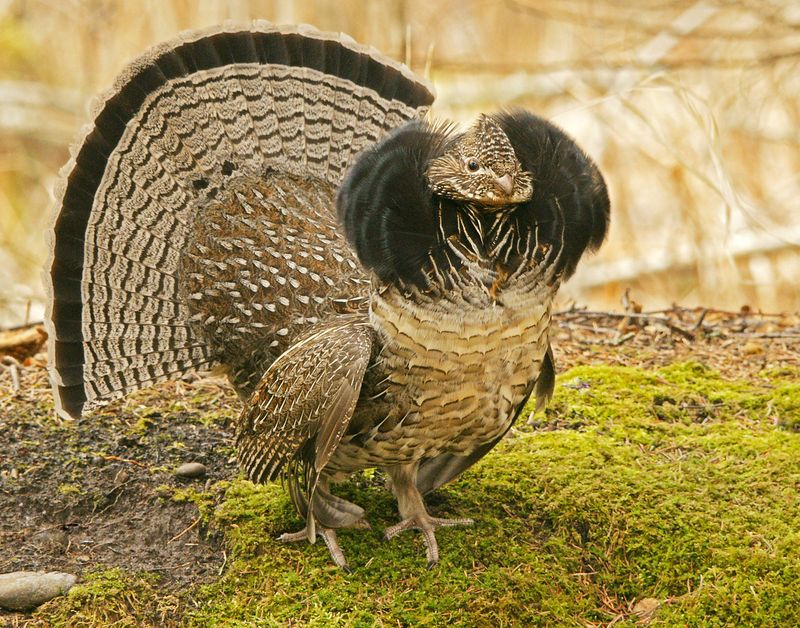
Pennsylvania’s forests resonate with the drumming of the Ruffed Grouse. Known for its distinctive ruff of feathers, this bird is a master of camouflage and woodland survival. The Ruffed Grouse’s drumming calls during the mating season are a signature sound of the forest. Its diet of buds, leaves, and insects contributes to forest health.
Efforts to maintain diverse forest habitats ensure the grouse’s survival. This bird’s presence highlights the richness and complexity of Pennsylvania’s ecosystems.
39. Rhode Island: Black-crowned Night Heron
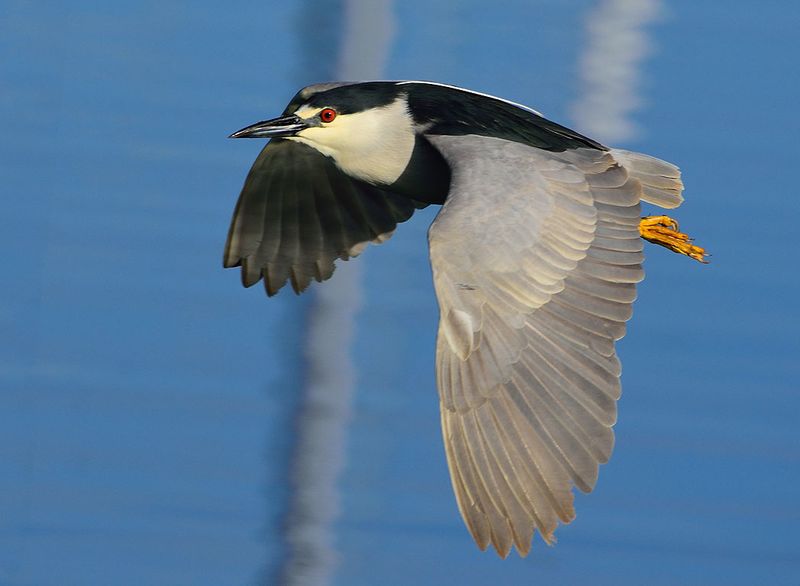
Rhode Island’s marshes are graced by the elusive Black-crowned Night Heron. Known for its striking black and white plumage, this bird is a master of nocturnal hunting.
The heron frequents wetland areas, where it hunts for fish and amphibians in the quiet of night. Its presence adds a touch of mystery to the marshy landscapes.
Conservation efforts to protect wetland habitats support the heron’s populations. This bird’s beauty and stealth highlight the ecological richness of Rhode Island’s natural areas.
40. South Carolina: Painted Bunting
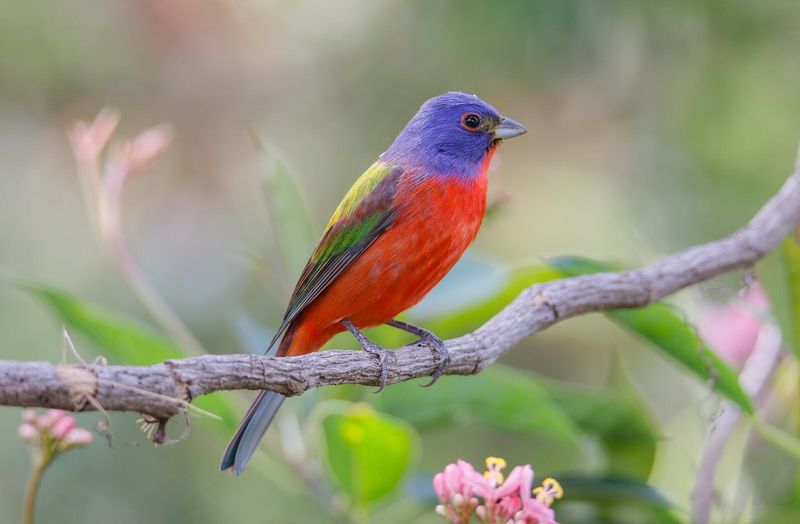
South Carolina’s landscapes are adorned by the vibrant Painted Bunting. Known for its rainbow-colored plumage, this bird is a visual delight and a favorite among birdwatchers.
The Painted Bunting frequents woodland edges and gardens, where its striking colors contrast against the foliage. Its diet of seeds and insects supports diverse ecosystems.
Conservation efforts to preserve habitats are vital for the bunting’s survival. This bird’s presence is a testament to the beauty and diversity of South Carolina’s natural environments.
41. South Dakota: American Bison
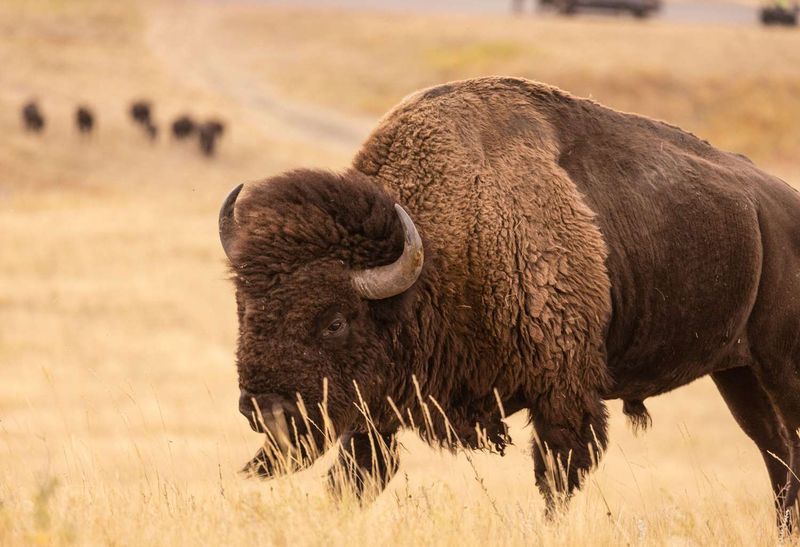
South Dakota’s prairies are home to the iconic American Bison. Known for its massive size and distinctive hump, this creature is a symbol of the American frontier.
The Bison’s grazing habits are essential for maintaining the health of the grasslands, promoting biodiversity and ecological balance. Its presence is a reminder of the prairie’s rich history.
Conservation efforts have helped restore Bison populations, allowing them to roam freely once more. This animal embodies the strength and resilience of South Dakota’s landscapes.
42. Tennessee: Black Bear
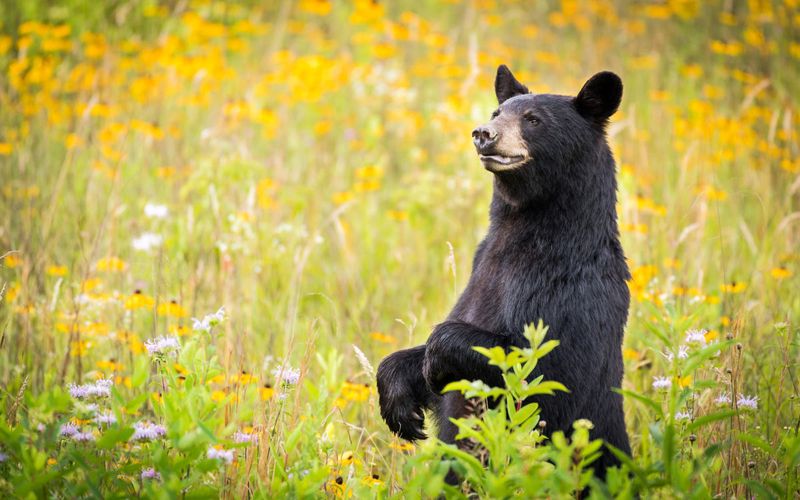
Tennessee’s forests are the playground of the inquisitive Black Bear. Known for its shiny black coat and curious nature, this bear is a fascinating creature of the wild. The Black Bear’s diet is varied, ranging from berries to small animals, showcasing its adaptability.
Its presence in the forests is a testament to the health of the ecosystem. Efforts to minimize human-bear conflicts and protect habitats are critical for the bear’s survival. This creature embodies the wilderness and beauty of Tennessee’s natural world.
43. Texas: Nine-banded Armadillo
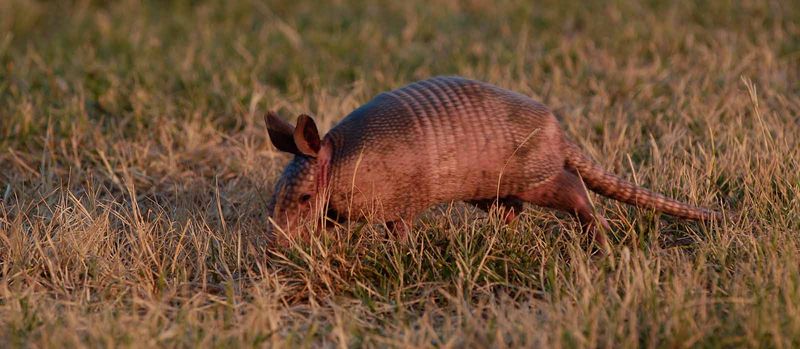
Texas’ open prairies and woodlands are home to the unique Nine-banded Armadillo. Known for its armored shell and digging prowess, this creature is a symbol of adaptability. The Armadillo’s diet of insects and small invertebrates plays a role in controlling pest populations.
Its burrowing habits contribute to soil aeration and health. Conservation efforts aim to ensure habitat availability and reduce road mortality. The Nine-banded Armadillo highlights the diversity and resilience of Texas’ wildlife.
44. Utah: American Bison
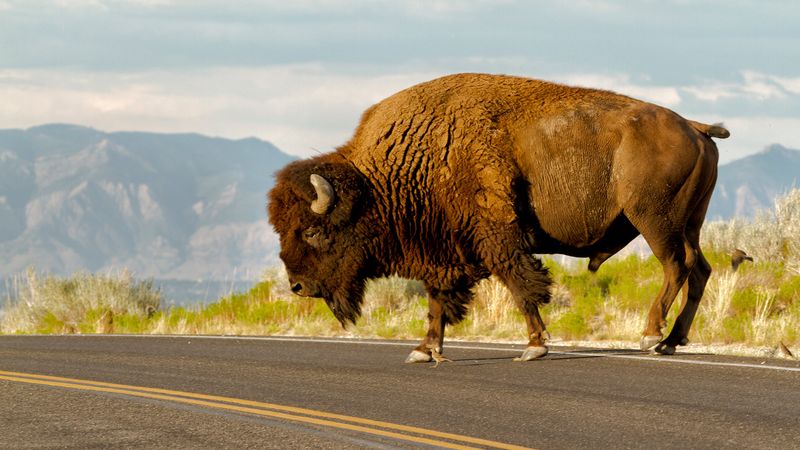
Utah’s national parks are graced by the presence of the American Bison. Known for their massive size and rugged beauty, these animals are icons of the American West.
The Bison’s grazing habits are key to maintaining healthy grassland ecosystems, promoting biodiversity and balance. Their presence is a symbol of the state’s natural heritage.
Conservation initiatives have ensured the protection of Bison populations, allowing them to thrive in their natural habitats. These creatures embody strength, resilience, and the enduring spirit of Utah’s wild landscapes.
45. Vermont: Hermit Thrush
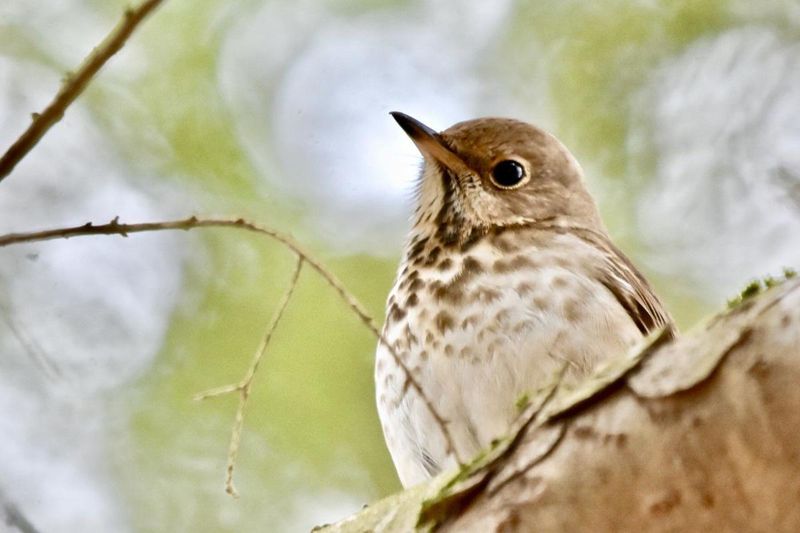
Vermont’s forests resonate with the ethereal song of the Hermit Thrush. Known for its distinctive voice, this bird is a symbol of the state’s natural beauty.
The Hermit Thrush’s brown and speckled plumage allows it to blend seamlessly with its woodland surroundings. Its melodic calls are often heard at dawn and dusk. Conservation efforts to preserve forest habitats support the thrush’s populations. This bird’s presence is a testament to the richness and serenity of Vermont’s ecosystems.
46. Virginia: Eastern Bluebird
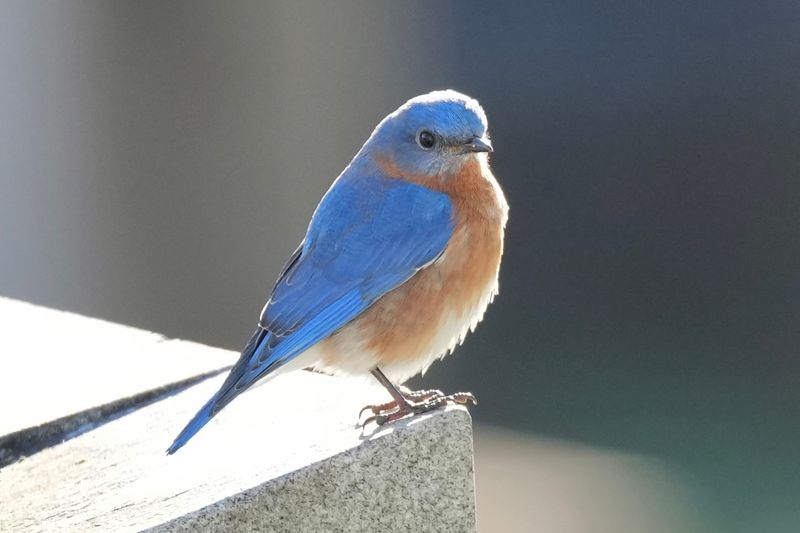
Virginia’s meadows are brightened by the presence of the Eastern Bluebird. Known for its vibrant blue and orange plumage, this bird is a cherished sight in gardens and fields. The Bluebird’s diet of insects helps control pest populations, contributing to ecological balance.
Its cheerful song adds a musical note to the landscape. Efforts to provide nesting boxes and preserve open habitats support the bluebird’s populations. This bird embodies the beauty and vitality of Virginia’s natural environments.
47. Washington: Orca
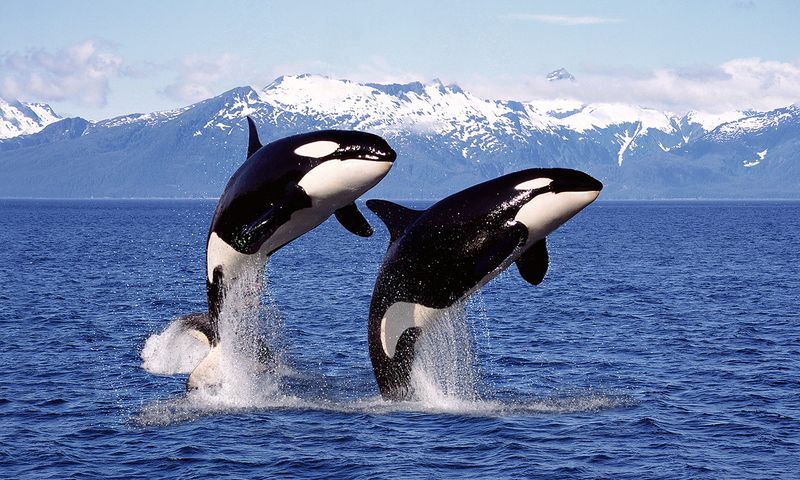
Washington’s Puget Sound is home to the majestic Orca, also known as the killer whale. Known for their striking black and white coloration, these marine mammals are icons of the ocean. Orcas are social creatures, often seen traveling in pods and exhibiting complex behaviors.
Their diet includes fish and marine mammals, highlighting their role as apex predators. Conservation efforts focus on ensuring clean, healthy waters and abundant prey for the Orcas. These whales embody the wild beauty and ecological significance of Washington’s marine environments.
48. West Virginia: Red Fox
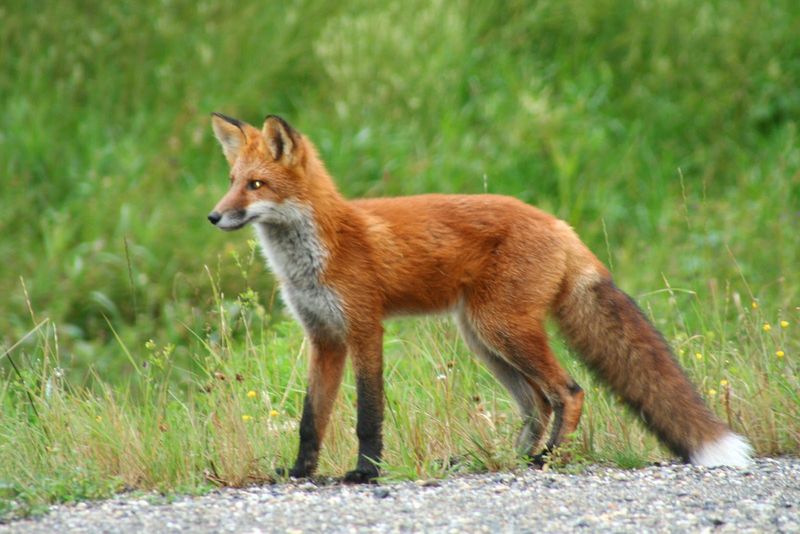
West Virginia’s meadows are home to the elusive Red Fox. Known for its fiery red coat and keen senses, this animal is a symbol of cunning and adaptability. The Red Fox’s diverse diet and hunting skills allow it to thrive in various environments, from forests to suburban areas.
Its presence is a testament to the state’s ecological diversity. Efforts to protect habitats and manage populations support the fox’s survival. This creature embodies the beauty and resilience of West Virginia’s natural landscapes.
49. Wisconsin: American Badger
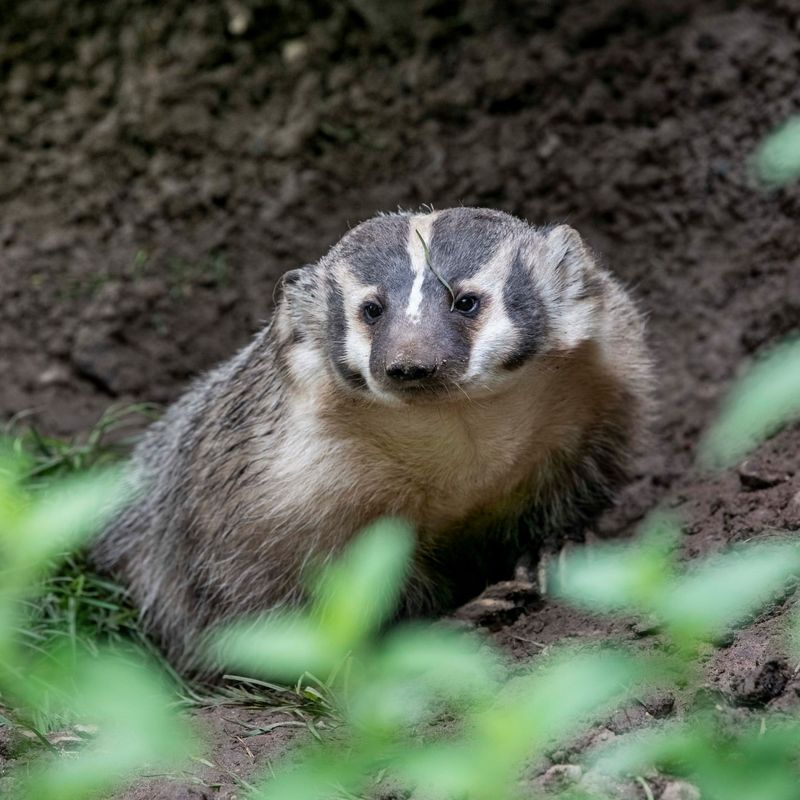
Wisconsin’s forests are the realm of the tenacious American Badger. Known for its sturdy build and distinctive facial markings, this creature is a master digger and skilled hunter. The Badger’s burrowing habits and diet of small mammals play a role in maintaining ecological balance.
Its presence is a testament to the dynamic nature of forested ecosystems. Conservation efforts focus on ensuring habitat availability and minimizing human-wildlife conflicts. The American Badger highlights the wild beauty and resilience of Wisconsin’s landscapes.
50. Wyoming: Pronghorn Antelope
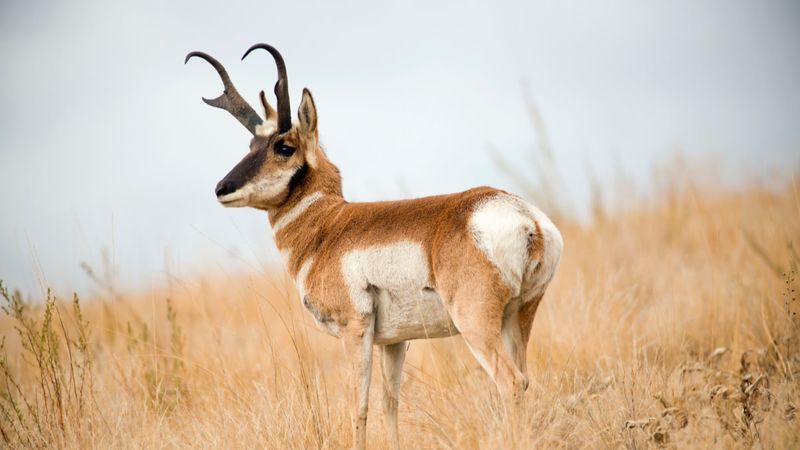
Wyoming’s open plains are home to the fleet-footed Pronghorn Antelope. Known for its incredible speed and sleek form, this animal is a marvel of endurance and agility. The Pronghorn’s distinctive horns and large eyes aid in detecting predators, ensuring its survival in the vast grasslands.
Its presence is a hallmark of the state’s wild beauty. Conservation efforts focus on maintaining migratory corridors and habitats. The Pronghorn Antelope embodies the spirit of freedom and the untamed landscapes of Wyoming.

